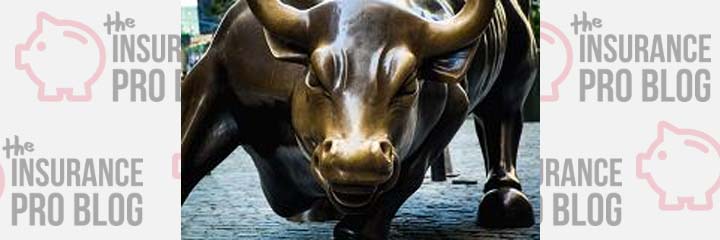Following up on last week’s article regarding whole life insurance and improved market conditions, we’re bringing the same question up about indexed universal life insurance this week.
Since we already covered some of the more intangible issues with this consideration last week, we’ll skip most of that this week (except for one nuance regarding indexed universal life insurance) and instead focus more on the returns we’d anticipate seeing if conditions improve and remain improved.
Do you have to Like the Market to Buy Indexed Products?
We sometimes get asked why bother with indexed universal life insurance if you could simply go out and invest in the market. I’d strongly argue that indexed products aren’t about the market. They are about conservative savings strategies that take advantage of certain aspects of the market and that helps improve performance.
Given this, I’m very much of the opinion that any thought process that suggests indexed products are like the market, and therefore you could just skip them in opt for the market, is short-sighted. And I think we’ll prove my point by the end of today’s post.
The Past 40 Years, they were Pretty Good for the Market
2013 has been a good year for the market, and if we average out the last 40 it looks pretty good. How good? Well the average return over the period is 12.7% and the compound annual growth rate is about 8.65% (sweet!). And that’s CAGR calculated as a systematic investment using the total return on the S&P500 as the guide for return values. But before you rush on over the Vanguard and buy an indexed fund let’s remember that the last 10 years haven’t been quite so awesome. The average return was just a hair under 6% (we’ll round up and give it to the Wall St) and the CAGR comes out to 5.88%.
Why 40 years? Because that happens to be the historical data that I have on file for a certain insurer who will allow me to look at (and illustrate) a historical indexed universal life product.
Our Indexed Example
Our specific indexed example will use a 1% floor and a 13% cap in all years following a one-year point-to-point indexing method for the S&P 500 Price Return (i.e. sans dividends). Our 40-year average return is 7.84% (far far better than the 6% we insist the industry adopt as the standard assumed rate). And these seemingly tiny differences net large changes to assumed income generation.
We’ve assumed a $30,000 per year premium. Under the 6% assumption, we can project income from age 66 to 100 of about $64,000 per year. When we run the assumption using 7.84% as our assumed rate, our projected income jumps to about $134,000 per year (the power of compounding).
So where does indexed universal life stand if we truly see the market rally like the last 40 or so years? In a better place than it does today by our estimations. And lets not forget that this assumes a rate cap of 13%, which is strongly affected by interest rates. If we see a corresponding rally in interest rates, insurers area highly likely to let these caps rates float up a bit.
But Please Note: the Market did do Better
Notice that the average rate of return on the S&P from the last 41 years does exceed the average return in our hypothetical indexed example (12.7% to 7.84%). The CAGR is 7.34%, which is also less than the market’s 8.65% over the last 40 years.
But notice that despite the lower overall return, the arithmetic (“average”) and geometric (CAGR) means for the indexed product are much closer to one another than they are with the market example. This all by itself is not exceptionally noteworthy. We know that indexed products have a floor (1% in this case) and a cap (13% in this case) and this keeps the data points closer to one another. We can, however use this fact to highlight that the volatility is much lower and as a result the predictability of the numbers if much better.
Keep in mind that indexed universal life insurance is not a market product and anyone still suggesting that it’s a door into the market without the risk is a fool. The product benefits from market movements in a slightly unique way, but in no way replaces or replicates actual investments in the stock market. For this reason, the two cannot and should not be compared as similar assets. Indexed insurance products are far more conservative in nature than securities. They have a solid protection of principal and yield favorably, but because they are never directly invested in the stock market entirely, they do not have the same risk profile and will never match total gains in a good year.
In a Booming Market
If the market booms indexed universal life insurance is likely to perform well. It has the ability to react to economic conditions faster than other fixed insurance products (i.e. whole life insurance and current assumption universal life insurance) because of its indexing features, which give the insurer more liberty over yield through a more favorable hedging strategy.
The product however will still lag securities if the market booms, and this is to be expected. Just as whole life insurance will improve as the economy improves, it will unlikely rival stock returns as the market booms. But that’s not the point of either product. If positioned as assets in a portfolio, both are low risk assets used to complement riskier investments/savings strategies or accommodate a more conservative risk profile.

